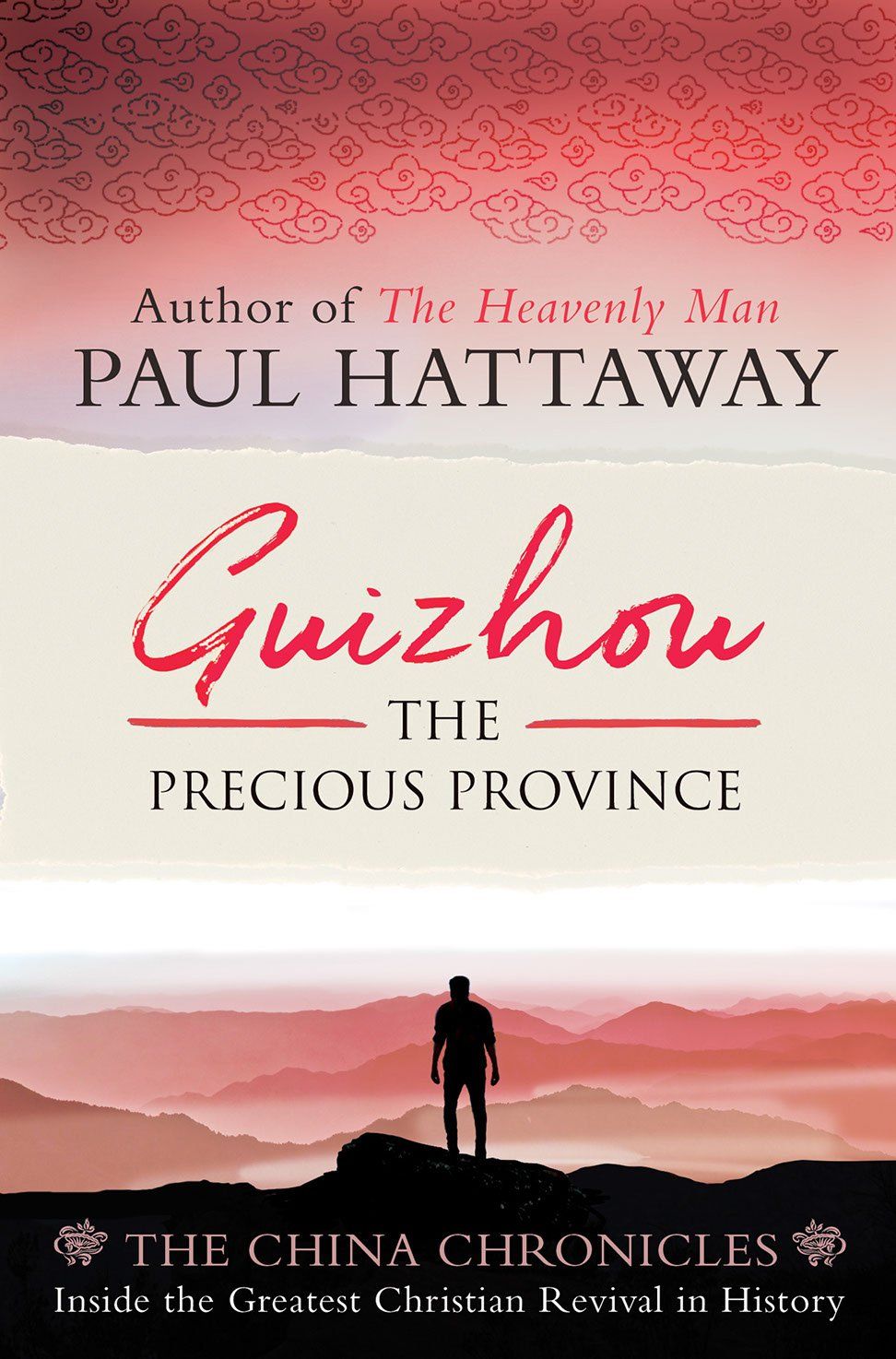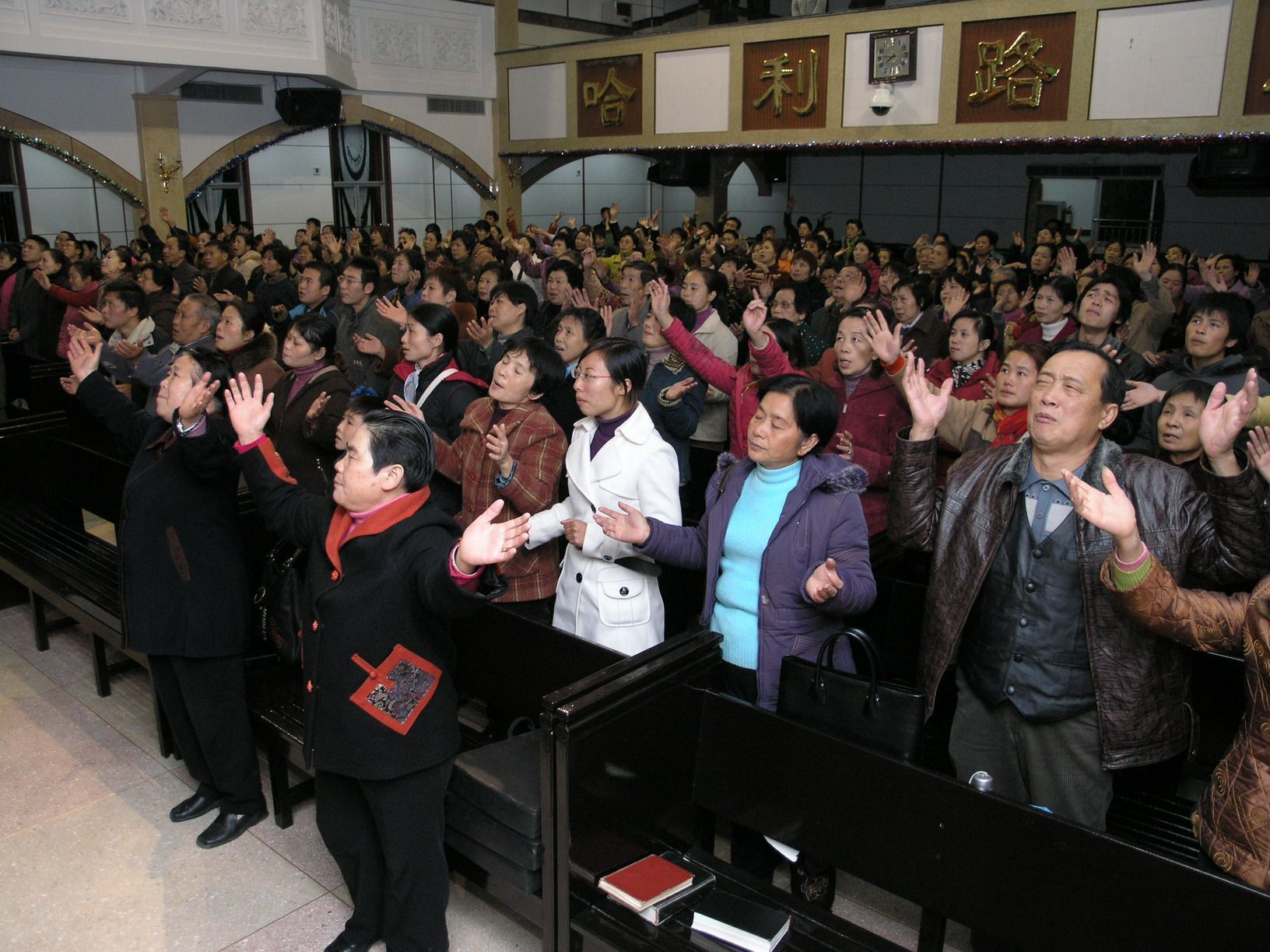1900s
Decay in Guiyang
At the start of the twentieth century, the gospel was being proclaimed to the Han Chinese living in the main cities of Guizhou, but very few had responded to the message.
Surprisingly, the China Inland Mission continued to be the only Evangelical group working in the province. Whereas denominations like the Presbyterians, Methodists, Anglicans, Baptists and others had thriving work in other parts of China, they chose to avoid Guizhou, leaving the entire province in the hands of the small and under-staffed CIM. In 1902 one missionary wrote from Guiyang:
"We are encouraged that interest in the meetings on the part of both men and women shows no sign yet of declining. The numbers who attend the meetings seem to be on the increase. On the evenings of Tuesday and Friday the number of men who come ranges from 40 to 60.... Some have put away their idols, to whose removal they were at the time very much opposed."
Just a year later, however, the work in Guiyang reached a low-ebb, with the CIM lamenting, "There have been no baptisms during the year, but, on the contrary, four members have had to be excluded from fellowship, one has died, and two have been transferred to other stations."
2,000 Families Deferred at Dushan
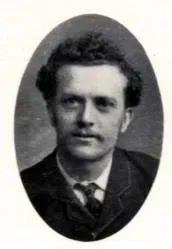
Thomas Windsor.
In the south Guizhou county of Dushan—at the time a six-day journey from the provincial capital—a delegation of 10 village leaders approached missionary Thomas Windsor in 1902, claiming they each had between 50 to 500 families under their charge who were ready to be baptized and admitted into the Church.
The missionary wisely exercised caution, however, and he soon discovered that most of the 'believers' had no understanding of the gospel at all. Their motives for wanting to become Christians were mixed, but chief among them was a hope that being connected to foreigners would earn them protection from their Chinese oppressors. This idea stemmed from observing Catholic churches in the province, which vigorously supported its members in lawsuits, and occasionally even threatened the use of foreign force during major disputes. Windsor reported:
"I think they were disappointed that I did not jump at the chance offered.... Being disappointed in these expectations, one or two showed me a cool front. That, however, is a small matter so long as their minds are disabused of such dangerous and erroneous notions.... While being polite and friendly, I nevertheless did my best to be perfectly straightforward with them, so as to obviate trouble in the future. Altogether there were more than 2,000 families who were willing to join us."
Although the Dushan village leaders returned home disappointed, the missionaries realized that if the people were able to gain a true understanding of the gospel, including the requirements of repentance and the need to forsake idolatry, a major movement to Jesus Christ might follow. They saw the incident at Dushan not as a rebuttal of hungry enquirers, but rather as a necessary delay to allow people's understanding of the faith to catch up with their zeal for change.
By 1905, however, no mass movement to Christ had occurred in Dushan. It appears the village leaders were put-off by the offence of the cross, and they never again offered their people to become Christians. Notwithstanding, some individuals at Dushan did respond to the Good News, among them an elderly woman who received the Lord with great joy.
Mission work in Guizhou was put on hold in 1900 when the Boxer Rebellion broke out throughout China. Adam was ordered to evacuate to the coast until the uprising subsided. When he returned to Anshun in 1901, Adam found only a few dozen Miao believers were still faithfully following God, but in the following year he had the joy of baptizing more than 20 new Hua Miao believers, some of whom became eager assistants to Adam, tirelessly spreading the gospel to as many villages as possible. The China's Millions magazine broke the wonderful news that at Anshun, "Sixty-one Miao were baptized in the presence of between 1,000 and 2,000 of their fellow tribesmen... many of whom have been coming to the services at Anshun once a month for more than two years."
Revival Breaks Out
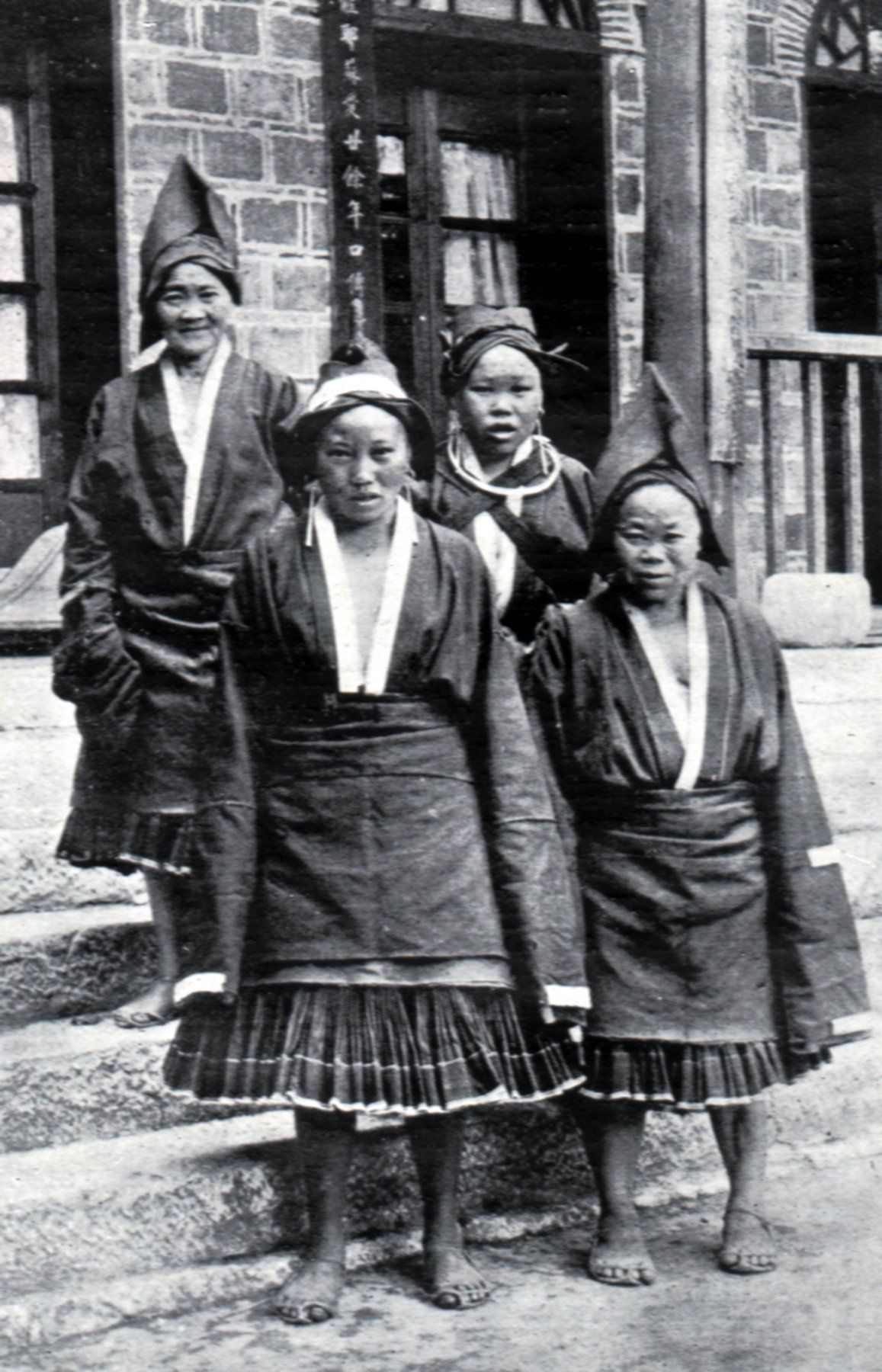
Four Hmong Shua Christian women at Anshun.
The awakening among the Hua Miao near Anshun soon spread to other tribes in the region. The first to benefit was a group known in Chinese as the Shui ('Water') Miao, who called themselves Hmong Shua in their own language. Adam wrote of his first contact with this group:
"To reach their district a river has to be crossed. For a long time no Miao would take me over that river, as they said the Chinese would kill them if they did so. At last, however, I found that a Miao evangelist had a relative who had married into the Hmong Shua tribe. Through this man and his wife I secured an introduction to the tribe over the river."
On the second day of Adam's visit with the Hmong Shua, a man suddenly died while working in his field. Adam immediately went and shared the gospel with the villagers, and the Lord granted him favor. At the start of 1907, Adam announced:
"The work quickly spread from village to village, and before long we had people from scores of villages attending the services at Anshun. Later we built a chapel and opened an out-station at Dengdeng. The Miao gave the site—trees for pillars, and stone for building, also money and free labor. Now there are at Dengdeng about 64 church members, and 200 to 300 people attending the services on Sundays."
A Hmong Shua schoolteacher was given a Chinese copy of the Gospel of Luke and a hymnbook. After returning home, be familiarized himself with the content of the books and began teaching them to his students. He then gathered the entire village together and taught them the gospel. As a result, one day Adam returned home from a long journey to find a group of men waiting for him. They demanded the missionary come to their village immediately. That night as Adam prepared to sleep, he was told a bonfire would be held in the morning. After sunrise, everyone gathered in the center of the village, where
"The drums used in sacrifice and sorcerer's wands and other instruments and charms were thrown into the fire. One woman said, 'Why should I wear this lucky charm? I now trust in the living God. The sorcerer told me to wear this. I shall trust his lies no longer,' and she threw it into the fire. All the other women followed her example. They ran to their houses and brought out all the 'soul-packets' they had [charms to ward off evil spirits]. These we also threw into the fire."
At the first baptismal service, nine Hmong Shua converts passed from death to life and became the first ever believers among their group. The following spring 20 more men and women were baptized in that village.
The Blessing Spreads to the A-Hmao
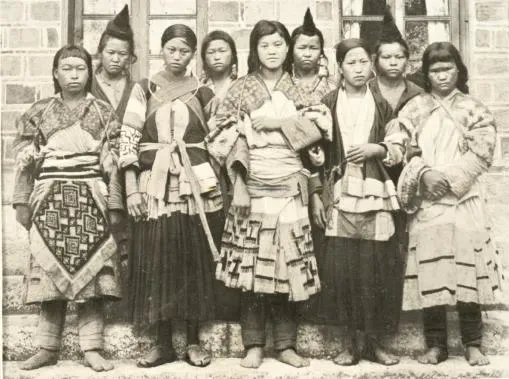
A group of A-Hmao Christian women at Anshun in 1906.
One day while he was staying at Dengdeng village, Adam was surprised to see a group of Miao men returning from a boar hunt. They were covered in dirt and had their hair twisted around their heads in the shape of a horn. In all his travels Adam had never encountered this group before, and he was excited to discover the men were from the A-Hmao tribe.
Most of the A-Hmao people lived nine days walk from Anshun, across numerous mountains and deep valleys. The people had so greatly multiplied in their home territory that the land could no longer support their numbers, so several hundred families had migrated south.
-
The A-Hmao had been oppressed for countless generations, and they had little dignity left. They were considered the lowest rung on the social ladder, and a landlord "would mount his horse by stepping on the back of a stooping A-Hmao.... The landlords would sell A-Hmao women as slaves or wives and frequently tortured the men."
Although James Adam didn't know it at the time, his chance encounter with the hunters was the start of the largest and most powerful people movement to Christ among all the tribes of Guizhou. The missionaries at Anshun suddenly found themselves in the midst of a full-blown revival, and each day was filled with extraordinary experiences of the glory of God. Adam recalled that when an old man first understood the gospel he proclaimed:
"'It is not good for us to keep such good news to ourselves. Let us go and tell our kinsmen!'... The old man at once went and told the people about the Lord Jesus Christ.... The people from that village came down in great numbers to Anshun to see us, at first several times a month and later regularly once a month."
The A-Hmao were hungry to learn more about the living God, so they dispatched delegations to Anshun to soak in all they could about the new faith. Such was their intense desire for the gospel that many made the long journey of nine or ten days each way over steep mountains and through deep rivers.
Because the Chinese despised the A-Hmao and refused to let them stay at their inns or eat in their restaurants, the pilgrims were forced to carry all their food in goat-skin bags during their arduous journeys. They slept under the stars at night, braving the conditions because the kingdom of God had become a pearl of great price to them, and no sacrifice was too great to make.
Adam and his wife felt overwhelmed by the steady stream of people who came to visit. They wrote: "Our house was just crowded out with them. One night I went round and counted my guests. We had over 300 sleeping in the house. Still they came from more and more distant places. This continued for months."
Stone Gateway
As the revival continued to spread, Adam and his Miao co-workers asked a group of A-Hmao visitors from a distant place if they were familiar with the town of Zhaotong in neighboring Yunnan Province, where another missionary from Scotland, the Methodist Samuel Pollard, had established an effective work. Adam was surprised when they answered that Zhaotong was only two or three days' walk from their home village, compared to the nine days it had taken them to reach Anshun. Adam encouraged the shy tribesmen to visit Pollard. They were hesitant at first, but finally agreed to go, and were warmly received.
The connection with Zhaotong proved to be a great boost for the advancement of the gospel among the A-Hmao. Pollard was soon overwhelmed with hundreds of enquirers just as Adam had been, and within a short time more than 1,000 A-Hmao converts were baptized. Pollard later described this stunning development:
"If anyone had to choose a people to teach and train, surely he would pass by these A-Hmao, and select a people whose outlook seemed more promising. So we think. So does not God think. He often does a startling thing, a new thing. The serfs in the dirty villages, the poor in the homes of poverty, the ignorant in the grip of the wicked medicine men—these appealed to the love and sympathy and chivalry of the Great God.... The people knew nothing of God and never cried to Him. But God knew them, and the time for His working came."
An A-Hmao chief donated a piece of land at Shimenkan (meaning 'Stone Gateway'), 23 miles (37 km) from Zhaotong. A large church building and school were constructed, which served as the center of both A-Hmao and Nosu Christianity for many years. All the money, material and labor for the buildings were provided by the local believers.
The work among the A-Hmao grew spectacularly, with thousands of people regularly attending church services. It was reported: "Deep interest is manifested in the gospel, with the audiences on three successive Sundays being about 900, 1,000, and 1,300 respectively. An early morning prayer meeting was held at which nearly 500 women were present, a number of whom lifted up their voices in public prayer to God."
Persecution Fails to Stop the Advance
As with all genuine moves of God throughout history, Satan soon tried to hinder the A-Hmao revival. Wicked men rose up against the new faith, attacking and robbing believers as they traveled, and the Chinese falsely accused them of poisoning wells that they passed during their long treks to and from Anshun. The greatest opposition, however, arose from within the A-Hmao communities. Their own tribal chiefs and spirit-priests, fearing a loss of influence as people abandoned their former ways and embraced new life in Christ, "had many of the Christians cast into prison, beaten, and fined. They also threatened to deprive of their land all who continued to read our books, or joined themselves to us."
The persecution was most severe in western Guizhou, but it soon petered out as the sheer weight of numbers of A-Hmao people coming to the Lord overwhelmed and blunted the opposition. Many meetings at Kopu were attended by between 2,000 to 3,000 eager tribesmen, and baptisms of hundreds of new converts were regularly conducted. James Adam described the A-Hmao believers' unquenchable zeal for God:
"They go out two by two visiting the villages far and near, preaching, singing and praying. Often when visiting these villages my heart has been delighted at the eager way in which the people seek to learn and gain the most benefit from the visit, even if it is only for one night. They will sit up listening till one or two o'clock in the morning. Frequently I have retired at that hour and at daylight have awakened to find them still learning to read texts of Scripture or some hymn of praise, or perhaps giving earnest heed to one of the Christians."
Adam and his co-workers customarily used a kerosene lantern to project images of Bible stories onto a wall as they traveled around the A-Hmao villages. The tribesmen often watched transfixed as the life, death and resurrection of Christ was presented and explained to them. At one village, when they came to the betrayal and crucifixion, Adam recalled:
"A great hush and silence fell upon the crowd.... Many in the great congregation were weeping, and I myself could not keep back the tears.... Next day 240 communicants sat round the Lord's table breaking bread and drinking the cup, thus showing the Lord's death till He comes. It was a glorious scene and my heart overflowed with praise to God at the sight of so many who recently were devil worshippers and sunken in immorality and sin, but who are now among His blood-washed ones."
The revival among the A-Hmao had appeared suddenly, and it burned with such intensity that the missionaries and their helpers had no way of keeping up with the progress. Throughout the hills of Guizhou, thousands of men and women who had been crushed and despised for countless generations, now found their worth in their Creator, Jesus Christ.
Baptisms from Morning till Night
When news of the A-Hmao revival reached Britain and America, some Christians there were skeptical, and they wondered if the reports were exaggerated. The missionaries were instructed to ensure that all candidates for baptism thoroughly understood and believed the truths of the gospels before being accepted into the Church. Mission boards even dispatched workers from other parts of China to verify the reports of the revival in Guizhou.
One missionary, Curtis Waters, was given the task of interviewing a large group of A-Hmao men and women who had applied to be baptized. Working each day from morning until late at night, Waters asked the candidates searching questions to ensure they were true believers. At first, many of the men and women were terrified by the examination of their doctrine and lives, as most had never spoken with a foreigner before. Waters filed this report:
"A man came and sat on a stool before us with 20 or 30 members sitting behind him, and was asked a series of questions which embraced all the principal articles of doctrine—the person of God, the trinity, the incarnation, redemption, intercession, coming of Christ, together with matters relating to life and practice....
I went out into the chapel for something, and, coming back, I found a man waiting at the door with his face in his hands, praying. Afterwards I got to know that he had been waiting two or three days, and was afraid his village was not going to be called up....
Laughter and tears were very near each other as we listened to some of their replies and recognized the grace and power of God manifested in these people.... Many came in and sat down trembling all over, wondering what questions they would be asked and whether they would be able to answer.... There were many old men and women, 60, 70, and over, and it was a rare thing that any of them had to be deferred for not being clear on the doctrine. It was marvelous, and I noted many times how clear and decisive they were....
For eight days this continued to be our daily program: From nine till two I examined candidates for baptism, then baptismal service, evening meal, and, after meeting again, examining till midnight or one o'clock. We had eight days' baptisms as follows: 201, 131, 152, 95, 108, 142, 128 and 12; a total of 969 in all....
The work is unquestionably of the Holy Spirit. The utter impossibility of any man thus teaching all these people attests to it.... These people, with an unquestioning faith simply accept the gospel teaching, and it is real to them. So, as ever, things hidden from the wise and learned He has revealed to babes. God has called them and revealed His Son in them, and to Him and the Word of His grace we commend them. He is able to keep them, and to make them the first-fruits of a multitude who shall yet be gathered out from this people to the praise and glory of His Name."
An Extraordinary Decade
As the first decade of the twentieth century drew to a close, the body of Christ in Guizhou looked back in awe and marvelled at what the Almighty God had accomplished.
The decade, which started terribly with the slaughter of 34 Hmu Christians, had concluded with full-blown revival among several Miao tribes in the province. By contrast, the work among the Han Chinese in the urban centers had struggled to progress, despite the faithful efforts of many missionaries. In Guiyang, the Evangelical church had reached such a low-ebb in 1905 that it was decided to disband the congregation and reorganize with a smaller membership.
At the start of the decade there had only been 70 Evangelical believers in the entire province, and by 1904 the number had grown to just 123.
When James Adam returned from a furlough in 1909, however, he wrote from the village of Kopu: "On the Lord's Day several thousand A-Hmao attended the services, and about 900 sat around the table of the Lord.... Connected with Kopu are 217 villages and hamlets; a Christian population of 7,000; and 2,000 communicants."
The work continued to expand under the blessing of God, and Christian meetings were soon being held every night in hundreds of villages. By 1911, the influence of the Anshun mission had expanded so rapidly that they now served a total of 3,504 church members, 19 evangelists, 192 local leaders, three Bible women, and 13 schools. Just a few years earlier, few people in Anshun had shown any interest in the gospel.
When the missionaries looked back several years after the revival began, they found that the Spirit of God had done a deep and lasting work. It was reported, "Of the 1,200 candidates baptized in 1906, we only know of three who have failed in trusting God."
© This article is an extract from Paul Hattaway's book 'Guizhou: The Precious Province'. You can order this or any of The China Chronicles books and e-books from our online bookstore.

